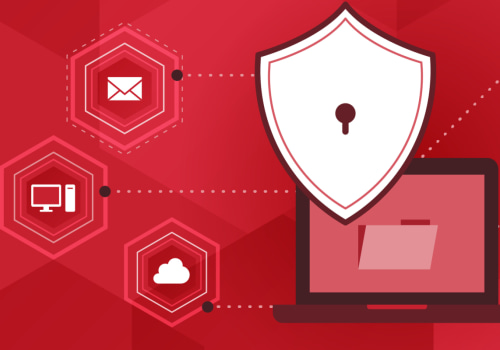Are you looking for a comprehensive guide on security software installation and configuration? If so, you've come to the right place. In this guide, we'll cover everything you need to know about the process of installing and configuring security software for your IT infrastructure, with an emphasis on HIPAA-compliant software. From understanding the basics of security software and the importance of proper installation and configuration, to the various steps involved in setting up your software and ensuring optimal protection, this guide has it all. We'll begin by taking a look at the different types of security software available, their features and benefits, and how they can help protect your data. We'll also discuss the importance of setting up your security software correctly and the steps you should take to ensure that it is properly configured.
Finally, we'll go over the different techniques you can use to ensure that your security software is always up to date and running optimally. When it comes to protecting your HIPAA IT infrastructure, installing and configuring security software is essential. Security software can include antivirus software, firewalls, encryption software, and access control systems. It's important to understand how to properly install and configure these different types of security software in order to ensure the security of your IT infrastructure. The first step in installing and configuring security software is to choose the right type of software for your needs.
Antivirus software helps protect against malicious code, such as viruses and Trojans, that can be used to gain access to your system or data.
Firewalls
are used to control incoming and outgoing traffic from your network, and can be used to block unauthorized access.Encryption software
helps protect data by scrambling it so that it cannot be read or understood by anyone other than the intended recipient. Finally, access control systems are used to restrict access to certain systems or data based on predefined rules.Once the appropriate type of security software has been chosen, the next step is to properly configure it. Proper configuration of security software is essential in order to ensure that it is working correctly and providing the necessary level of protection. It is also important to make sure that the software is regularly tested and updated in order to ensure that it is still providing adequate protection. Common mistakes that should be avoided when configuring security software include failing to enable the latest security updates, using weak passwords, and leaving default settings unchanged.
Finally, it is important to understand how to troubleshoot any issues that may arise during the installation and configuration process. Troubleshooting can involve checking log files, uninstalling and reinstalling software, or contacting the vendor for technical support. It is also important to regularly test and update security software in order to ensure that it is operating correctly. This can involve running antivirus scans, testing firewalls, or performing encryption key rotations.
In conclusion, installing and configuring security software is an essential part of any HIPAA IT infrastructure. It is important to understand how to properly install and configure different types of security software, as well as how to ensure that they are properly configured and regularly tested and updated. Troubleshooting any issues that may arise during the installation and configuration process is also important in order to ensure that the security software is providing adequate protection.
Common Mistakes in Security Software Installation and Configuration
When it comes to security software installation and configuration, there are several common mistakes that can occur.Failing to configure the software correctly can leave gaps in your IT infrastructure's security, while neglecting to update the software regularly can leave it vulnerable to attack. Both of these issues can have serious consequences, including a data breach or system failure. To avoid these mistakes, it is important to understand how to properly install and configure security software. A comprehensive installation and configuration plan should be established before any installation begins, and the software should be regularly updated with the latest security patches.
Additionally, if the security software includes user authentication or access control features, it should be configured properly to ensure only authorized users can access the system. Additionally, administrators should pay careful attention to the log files generated by the security software. These logs can provide valuable insight into potential vulnerabilities in the system, as well as alert administrators to potential attacks. Finally, administrators should regularly review the security settings of their software to ensure they are up-to-date and properly configured.
Troubleshooting Security Software Issues
Troubleshooting security software issues can be a difficult and time-consuming task.However, it is important to identify and fix any issues in order to maintain the security of your IT infrastructure. Here are some tips for troubleshooting security software issues:1.Check system logs: System logs can provide valuable information about any errors that are occurring while installing and configuring security software. It is important to look for any errors or warnings that may indicate the source of the problem.2.Contact the vendor for assistance: If the issue persists after checking system logs, it may be necessary to contact the vendor for help. The vendor may be able to provide additional information or even provide a resolution to the problem.3.Test the software: Testing the security software can also help to identify any potential issues.
It is important to test the software in a controlled environment before deploying it in production.4.Check for updates: Often times, security software needs to be updated to ensure that it is running the latest version. This can help to eliminate any issues caused by outdated versions of the software. These tips can help you identify and troubleshoot any issues that may arise when installing or configuring security software. It is important to take the time to address any issues in order to ensure that your IT infrastructure is secure and functioning properly.
Best Practices for Security Software Installation and Configuration
When installing and configuring security software, it is important to follow best practices in order to maximize the effectiveness of the system. Best practices for security software installation and configuration include user training, establishing policies and procedures, and monitoring system logs.User training is essential in order to ensure that all users are aware of the security measures in place and how to use them correctly. Establishing policies and procedures helps to ensure that everyone follows the same rules in order to maintain a secure system. Finally, monitoring system logs allows administrators to identify potential security issues quickly. The following are examples of best practices for security software installation and configuration:
- Provide user training on how to use the security software.
- Establish policies and procedures for the security software.
- Monitor system logs regularly for suspicious activity.
- Keep all software up to date with the latest patches and updates.
- Enforce strict password policies and use two-factor authentication when possible.
- Ensure that all users are using unique usernames and passwords.
- Perform regular vulnerability scans to identify any potential weaknesses in the system.
Security software installation and configuration is a critical part of any HIPAA IT infrastructure, and it is important to follow best practices when installing and configuring the software. Common mistakes to avoid include failing to update the software regularly, using outdated versions of the software, and not testing the software before and after installation. Troubleshooting security software issues can be complex and time-consuming, so it's important to create a secure environment and regularly monitor and update security software to ensure that it is properly configured and secure. In conclusion, proper security software installation and configuration is essential for any HIPAA IT infrastructure. It is important to follow best practices when installing and configuring the software, regularly update the software, and test the software to ensure that it is operating correctly.








Leave Message